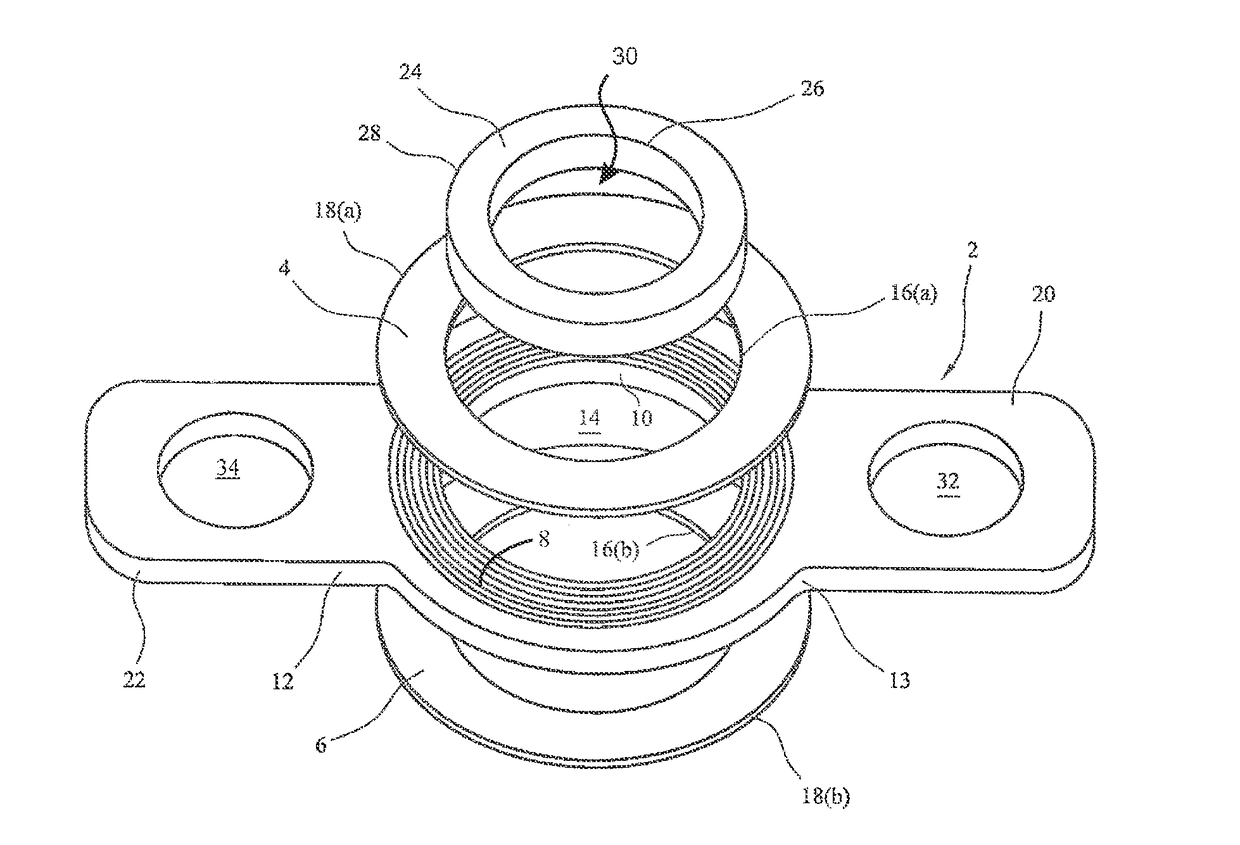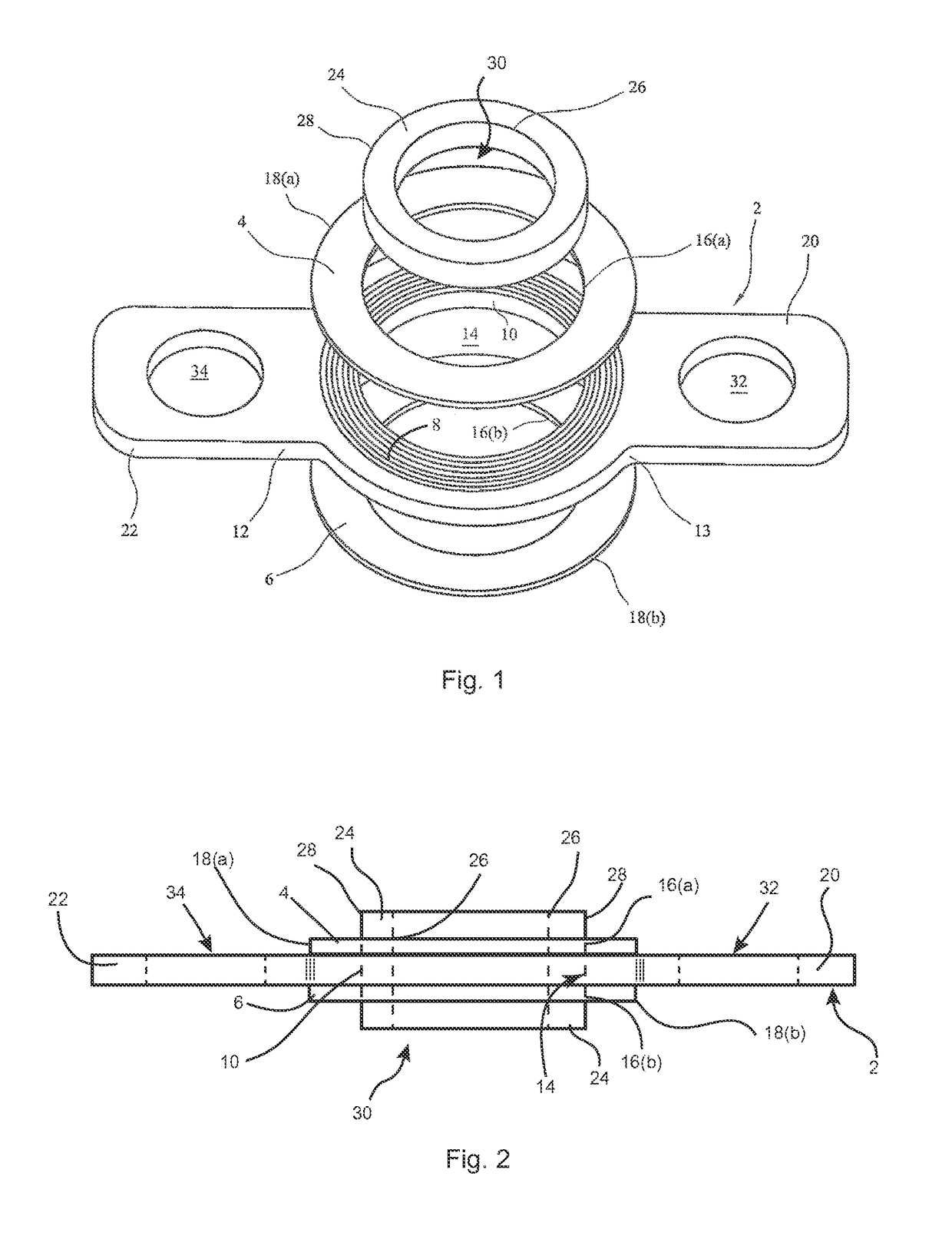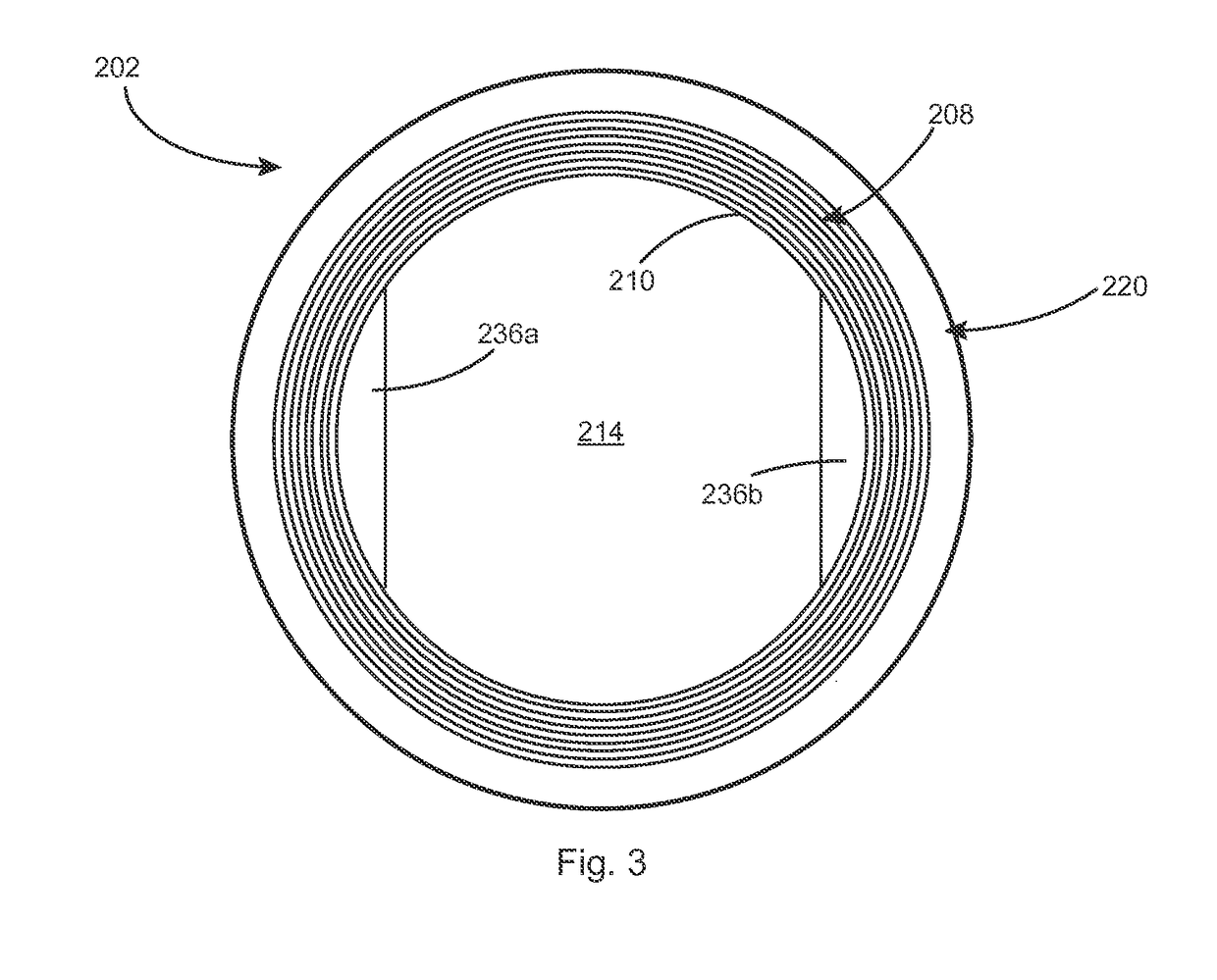gasket
a technology of gaskets and gaskets, applied in the field of gaskets, can solve the problems of affecting the sealing effect of flange joints, so as to reduce the corrosion reaction and prevent the effect of corrosion
- Summary
- Abstract
- Description
- Claims
- Application Information
AI Technical Summary
Benefits of technology
Problems solved by technology
Method used
Image
Examples
Embodiment Construction
[0058]Referring to FIGS. 1 and 2, a corrugated gasket core 2 is shown having a corrugated area 8 extending outwardly from an inner edge 10 defining a first aperture 14 to a plane surfaced outer area 12. FIG. 1 shows the core 2 prior to complete covering of the upper and lower surface of the corrugated area 8 with respective PTFE sealing rings 4, 6 having inner edges 16a, 16b which also define the first aperture 14 and outer edges 18(a), 18(b) which terminate at the outer edge of the corrugated area 8 when affixed to the surface of the core. FIG. 2 shows a side view of the assembled gasket. The core 2 includes handling lugs 20, 22 extending outwardly from the plane surface area 12 on opposite sides of the gasket core. Each lug 20, 22 is integral with the core and has a centrally disposed hole 32, 34 to accommodate a fixing bolt (not shown) when locating the gasket in the flange joint.
[0059]Referring to FIG. 3, a corrugated gasket core 202 is shown having a corrugated area 208 extendi...
PUM
 Login to View More
Login to View More Abstract
Description
Claims
Application Information
 Login to View More
Login to View More - R&D
- Intellectual Property
- Life Sciences
- Materials
- Tech Scout
- Unparalleled Data Quality
- Higher Quality Content
- 60% Fewer Hallucinations
Browse by: Latest US Patents, China's latest patents, Technical Efficacy Thesaurus, Application Domain, Technology Topic, Popular Technical Reports.
© 2025 PatSnap. All rights reserved.Legal|Privacy policy|Modern Slavery Act Transparency Statement|Sitemap|About US| Contact US: help@patsnap.com



